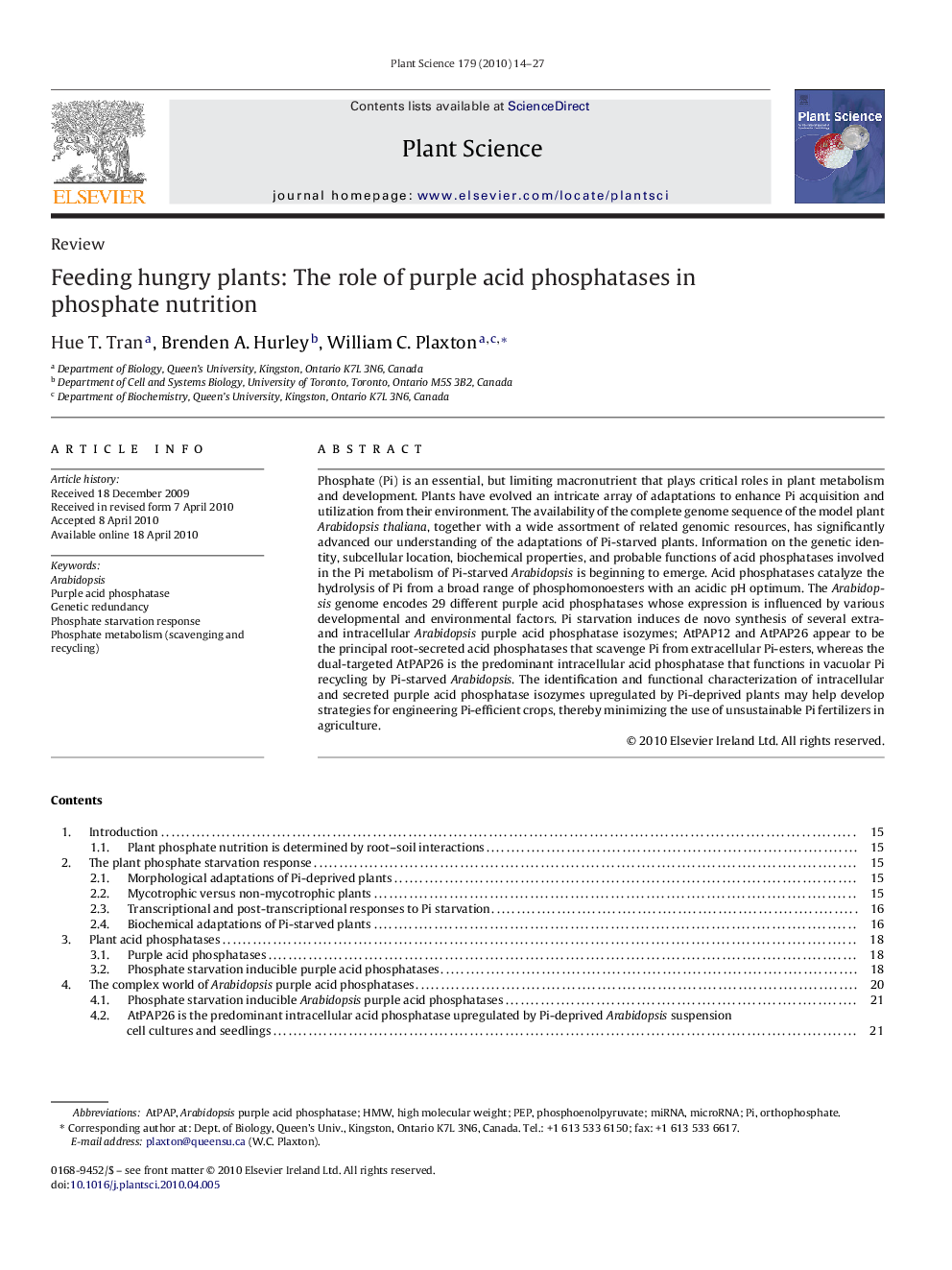| Article ID | Journal | Published Year | Pages | File Type |
|---|---|---|---|---|
| 2017810 | Plant Science | 2010 | 14 Pages |
Phosphate (Pi) is an essential, but limiting macronutrient that plays critical roles in plant metabolism and development. Plants have evolved an intricate array of adaptations to enhance Pi acquisition and utilization from their environment. The availability of the complete genome sequence of the model plant Arabidopsis thaliana, together with a wide assortment of related genomic resources, has significantly advanced our understanding of the adaptations of Pi-starved plants. Information on the genetic identity, subcellular location, biochemical properties, and probable functions of acid phosphatases involved in the Pi metabolism of Pi-starved Arabidopsis is beginning to emerge. Acid phosphatases catalyze the hydrolysis of Pi from a broad range of phosphomonoesters with an acidic pH optimum. The Arabidopsis genome encodes 29 different purple acid phosphatases whose expression is influenced by various developmental and environmental factors. Pi starvation induces de novo synthesis of several extra- and intracellular Arabidopsis purple acid phosphatase isozymes; AtPAP12 and AtPAP26 appear to be the principal root-secreted acid phosphatases that scavenge Pi from extracellular Pi-esters, whereas the dual-targeted AtPAP26 is the predominant intracellular acid phosphatase that functions in vacuolar Pi recycling by Pi-starved Arabidopsis. The identification and functional characterization of intracellular and secreted purple acid phosphatase isozymes upregulated by Pi-deprived plants may help develop strategies for engineering Pi-efficient crops, thereby minimizing the use of unsustainable Pi fertilizers in agriculture.
